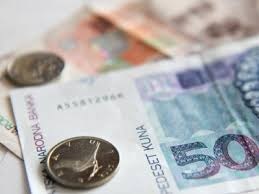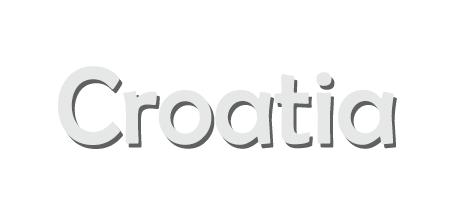
Blessed with sunshine throughout the year and a wealth of natural attractions, Croatia is an ancient nation as well as a young state. Officially known as the Republic of Croatia, it is nestled between Europe and the Mediterranean regions, near the Adriatic Sea. It had to face thousands of years of foreign meddling, incursions and wars before being finally recognized as a distinct entity in 1992. Recognised as one of the most popular tourist destinations of Europe, the historic towns of Croatia and its idyllic islands have a lot to offer, from rolling vineyards to sweeping coastal cliffs. Croatia is a country where one finds acres of uninhabited land, colourful reefs and a kaleidoscope of tropical fish and the coast is scattered with islands best suited for scuba diving sports. The towns of Croatia boast of a rich and historical heritage. The healing properties of the thermal springs, continental architecture, castles, national parks and resorts are amongst the natural as well as manmade attractions of this beautiful country. Croatia is the only country of Europe which has as many as eight national parks in such a small area. Let us learn more about Croatia.
Croatia is a country located in south–eastern Europe, bordering the Adriatic Sea lying between Bosnia and Herzegovina and Slovenia. Also, it borders countries such as Bosnia and Herzegovina (956 km), Hungary (348 km), Montenegro (19 km), Serbia (314 km) and Slovenia (600 km). Covering a total area of about 56,594 sq. km, area occupied by land is about 55, 974 sq. km whereas water occupies about 620 sq. km. Stretching a coastline about 5,835 km, it lies between the geographic coordinates 45°10’N latitude and 15°30’E longitude. Comparatively, it is slightly smaller than West Virginia and ranks 127th in the world.
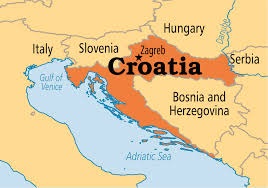
Croatia enjoys a Mediterranean as well as a continental type of climate. The continental climate is predominantly marked with hot summers and cold winters and along the coastal areas, the pattern is mild winters and dry summers. The mean temperatures in summer is between 24°C–26°C and between 2°C– 9°C during winters along the coastal areas whereas the interiors are cooler at 22°C. The terrain is geographically diverse with flat plains along the Hungarian border and low mountains and highlands near the Adriatic coastline and islands. The lowest point of elevation is the Adriatic Sea at 0 m while the highest point of elevation is at Dinara at 1,831 m. Available natural resources of Croatia are oil, some coal, bauxite, low–grade iron ore, calcium, gypsum, natural asphalt, silica, mica, clays, salt and hydropower. Destructive earthquakes are a natural hazard whereas air pollution and acid rains from metallurgical plants, coastal pollution from industrial and domestic waste and removal of landmines and reconstruction of infrastructure are the environmental issues faced by Croatia.
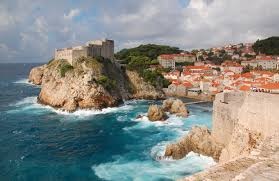
The vegetation is Mediterranean, rich and varied and covered with woods and macchia thickets. Conifers such as Aleppo pine, stone pine, Dalmatian black pine and cypress grow here along with thick indigenous forest of holm oak, wild olive, grapes, carob, bay, heather, arbutus, prickly juniper, vetch and other plants grow in low, undergrowth areas called macchia. Indigenous herbs and aromatic plants such as sage, rosemary, lavender, immortelle, mint and marjoram and various types of decorative trees such as palm, eucalyptus, bougainvillea, oleander and cacti are found here. The fauna includes lizards, wolves, bears, hare, foxes, boars, wildcats, and wild sheep. Marine life in the Adriatic is rich as well, with coral reefs as its natural habitat.
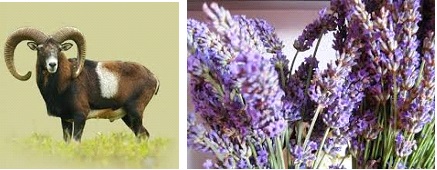
The Croatian society is based on the class system where family name and professional status are important rather than wealth. Indicators of high social statues include dress, material wealth such as an apartment or house, an automobile and a vacation. Women do the household chores including cooking, laundry and childcare while men did the outdoor work. Although Croatia is portrayed as a patriarchal society, women enjoy equal rights. Couples arrange their own marriage and normally they have a serious relationship for at least year before marriage. Infants are cared for at home by mothers or are placed in kindergartens. Children are verbally corrected for their misbehaviour and spanking is not common. People stand close to each other or talk loudly. Strangers stare openly but formality is maintained in the behaviour and language with strangers. People greet and meet each other informally and kiss on the cheeks to their acquaintances.
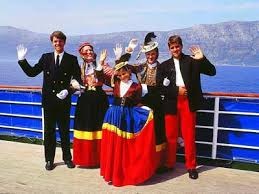
The official language of Croatia is Croatian spoken by about 95.6% of the population along with other languages such as the Serbian, Hungarian, Czech, Slovak and Albanian. The dominant religion of Croatia is Roman Catholicism practiced by about 86.3% of the Croatians followed by some minority groups of the Orthodox, Muslims, atheist and others.
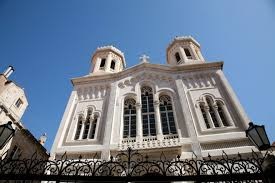
Croatian cuisine is a unique blend of both, the Mediterranean and continental food. Breakfast is simple consisting of strong coffee with bread and jam. A typical lunch consists of chicken or beef soup, cooked meat (usually pork), potatoes and bread. The traditional dinner consists of leftovers from lunch, cold meats and cheese with bread. Green vegetables in vinegar and oil are served during springs and summers whereas in the winters, pickled vegetables are served. In the coastal areas, meal is made up of fish and pasta, risotto or polenta. Restaurants are expensive and meals are usually eaten at home but eating snacks along with coffees in cafes is normal. Quantity defines food on holidays and special occasions, especially meat. Roast pork along with the skin, is popular in Zagreb and Slavonia. Fried cheese, octopus salad, spicy grilled meats and dishes made from phyllo reflect their cultural influences. Alcohol such as plum, grape or herb brandy is popular. A special cake and alcohol is an important part of the celebration but strong Turkish–style coffee and espressos are important symbols of hospitality.
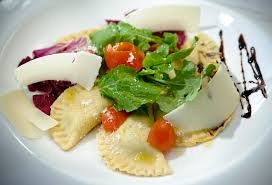
Croatian economy suffered terribly during the war of the nineties but still remains one of the wealthiest amongst the former Republic of Yugoslavia. Its agricultural products are arable crops such as wheat, corn, barley, sugar, beet, sunflower, rapeseed, alfalfa and clover and vegetables (potatoes, cabbage, onion, tomato and pepper) and fruits (apples, plums mandarins, olives and grapes) and livestock including cattle cows pigs and dairy products. Industries which contribute to its development are chemicals and plastics, machine tools, fabricated metal, electronics, pig iron and rolled steel products, aluminium, paper, wood products, construction materials, textiles, shipbuilding, petroleum and petroleum refining, food and beverages and tourism. Croatia exports transport equipments, machinery, textiles, chemicals, foodstuffs and fuels to Italy, Bosnia and Herzegovina, Germany, Slovenia, Austria and Serbia whereas it imports machinery, transport and electric equipments, chemicals, fuels and lubricants and foodstuffs from Italy, Germany, Slovenia, Russia, Austria, China and Hungary.
